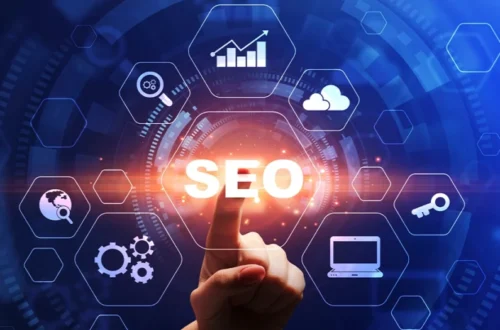AI-Powered Personalization Will Define User Journeys
As artificial intelligence continues to evolve, websites in 2025 will take personalization to the next level. AI-driven design elements will adapt content, layout, and product recommendations in real time based on user behavior, preferences, and browsing history. Websites will no longer be static; they’ll evolve dynamically with each visit, offering tailored experiences that feel intuitive and efficient. This level of personalization not only enhances user satisfaction but also significantly increases engagement and conversions.
Immersive 3D Elements and Interactive Visuals
Web design in 2025 will lean heavily into immersive experiences using 3D visuals, interactive animations, and depth-driven interfaces. These elements add realism and engagement, allowing users to explore products, environments, or features in more tactile and engaging ways. Whether it’s a rotating product model or an animated explainer interface, 3D elements will become more accessible thanks to advances in web rendering and faster internet speeds. The goal is not just to impress, but to provide meaningful interactivity that enhances understanding and retention.
Dark Mode and Soft UI Aesthetics
Dark mode has become a staple, and in 2025, it’s more refined with smooth contrasts, deep neutrals, and energy-efficient design considerations. At the same time, soft UI (also known as neumorphism) continues to gain traction. This style uses subtle shadows, rounded shapes, and light gradients to create interfaces that feel tactile yet modern. Together, dark themes and soft UI contribute to a visually soothing experience that prioritizes readability and user comfort, especially in low-light environments.
Sustainable and Eco-Conscious Design
Sustainability is becoming a priority in all areas of business, and web design is no exception. Eco-conscious websites in 2025 will be optimized for energy efficiency by reducing unnecessary scripts, minimizing image sizes, and using cleaner code. Designers are also focusing on ethical design practices—such as reducing digital clutter and avoiding manipulative UI patterns. Websites will proudly showcase their sustainability practices through minimalist design, optimized performance, and transparent communication.Visit Website For More details.
Voice User Interfaces and Conversational Design
With the widespread use of voice assistants and smart devices, voice user interfaces (VUIs) will become more integrated into web experiences. Users will increasingly expect to navigate, search, or perform tasks using voice commands. Conversational design, powered by AI chatbots, will also evolve to be more human-like, helpful, and context-aware. This shift allows for faster user interaction and adds accessibility for a wider range of users, making the web more inclusive and intuitive.
Storytelling and Narrative-Based Layouts
Storytelling through scrolling—known as storytelling—will be a dominant trend. Websites will guide users through narratives using animations, transitions, and multimedia that unfold as the user scrolls. This approach transforms passive reading into interactive engagement. Whether it’s used in brand storytelling, product showcases, or case studies, storytelling makes content more immersive and memorable. It’s a powerful way to connect emotionally and inform clearly in a crowded digital space.
Futuristic Typography and Kinetic Text
Typography will become more experimental and expressive in 2025. Designers are moving beyond static fonts to incorporate kinetic text—animated or responsive typography that reacts to user interactions or changes over time. These elements not only draw attention but also convey emotion and brand tone. Bold, oversized fonts, variable typography, and motion-integrated headlines will be common, helping to break traditional design boundaries and deliver more impactful messages.
Asymmetry and Broken Grid Layouts
Modern web design is moving away from strict symmetry and predictable grids. In 2025, we’ll see more websites embracing asymmetrical and broken grid layouts to create a sense of dynamism and creativity. These designs challenge conventions and offer a more unique, artistic experience. They allow for more expressive branding and visual storytelling, especially for creative portfolios, startups, and fashion brands. The key is to balance unpredictability with clarity and functionality.
Augmented Reality Integration for Product Demos
Augmented reality will become more mainstream on the web, especially for eCommerce and real estate platforms. Users will be able to visualize products in their environment using AR directly through their browsers. This trend offers powerful benefits: reducing uncertainty, boosting buyer confidence, and enhancing product interactivity. In 2025, seamless AR integration will become a competitive edge, especially for brands offering complex or physical goods.
Privacy-Centric and Ethical Design Practices
With rising concerns about data privacy, web design will be shaped by transparency and user empowerment. Designers will emphasize clear consent mechanisms, simple privacy settings, and cookie policies that are easy to understand. Ethical design will also focus on eliminating dark patterns—those deceptive UI practices that trick users. Respecting user data and offering full control will no longer be optional; it will be a core trust-building element of modern web presence.



